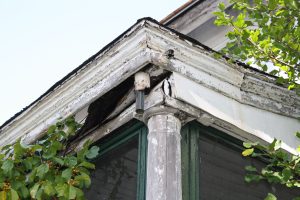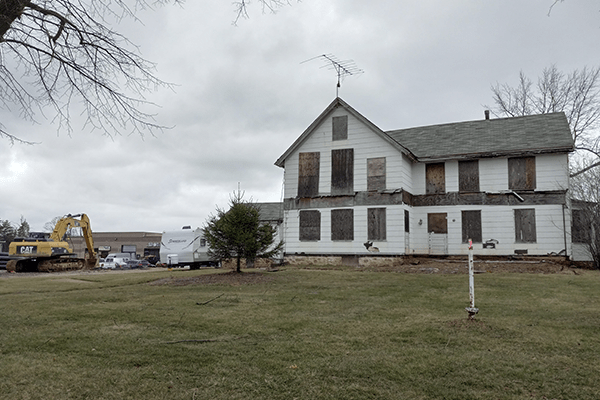|
RCBJ-Audible (Listen For Free)
|
Starbucks To Rise Where 1825 Frame House Will Be Razed In Nanuet
On a Personal Note
By Tina Traster
Canarsie, a Brooklyn neighborhood that reclaimed swampland around Jamaica Bay, was a hodgepodge of 1960s two-family homes made of wood or brick. By anyone’s standards, the neat tree-lined streets where I grew up had neither the charm of old historic towns filled with Colonials or Victorians, nor did it have the eye-popping suburban architecture that either preserves or mimics the best of American architecture.
All my life, I was drawn to historic buildings and had the privilege to live in a pre-war beaux-arts co-op on Manhattan’s Upper West Side for many, many years.
Nearly 20 years ago, I landed in Rockland County. Yeah, I bought that old house that I saw as a palette of possibility and mostly everyone else viewed as a money pit. The one only a naïve city girl could fall for. I’ve loved and nurtured it from day one.
When I bought the 1850s farmhouse, a cavalcade of home contractors said “that’s a teardown.” I disagreed, and I’ve not spent a day regretting that decision, even though I’ve had to deal with the quirks of owning (or perhaps it owns me) an old house.
 Which brings me to discuss the old house on Route 304 and West Nyack Road in Nanuet that is slated to become a Starbucks. It’s not a unique situation: many remaining historic houses – this one was built in 1825 – succumb to bulldozers that erase history and replace it with chains or commercial buildings. It happens all the time; but it doesn’t have to. In many towns in Westchester and Connecticut and New Jersey, old buildings are saved and preserved and repurposed. Their beauty often stands in contrast to the drone of “progress”. They provide the eye a delight, a hint of nostalgia maybe. But also continuity, giving a streetscape the dual joy of looking back and moving forward simultaneously.
Which brings me to discuss the old house on Route 304 and West Nyack Road in Nanuet that is slated to become a Starbucks. It’s not a unique situation: many remaining historic houses – this one was built in 1825 – succumb to bulldozers that erase history and replace it with chains or commercial buildings. It happens all the time; but it doesn’t have to. In many towns in Westchester and Connecticut and New Jersey, old buildings are saved and preserved and repurposed. Their beauty often stands in contrast to the drone of “progress”. They provide the eye a delight, a hint of nostalgia maybe. But also continuity, giving a streetscape the dual joy of looking back and moving forward simultaneously.
When I arrived in Rockland, that lone house amid a sea of retail and highway traffic and the din of suburban commercial sprawl on Route 304 caught my attention with its pitched roof and cornices and a porch. It conjured a rural Rockland past I’d never know. But I could imagine that house once had country folk sipping lemonade on the porch while horse drawn carriages groaned by on a rough road. The vintage house made me think about my own, the house I rescued. It’s been said the house was once home to the Clarkstown Police Department. There was once a gas station there.
The half-acre site where local developer John Magee will build a Starbucks had been listed “for lease” for almost two decades. The site is located in a zone that permits light industrial and office uses (LIO) but not restaurants. The deal was contingent on obtaining zoning approvals for the site.
The rotting ghostly house has deteriorated significantly in the 20 years I’ve been here but I still feel its pull when I motor by it. I always let out an audible sigh, and say “it’s too bad” someone or Starbucks couldn’t find a way to integrate the old soul into a new plan. I knew that was unlikely because Starbucks is a national chain with format architecture and that a historical rehab is a big undertaking. There is a Starbucks in Doylestown, Pa that took over an historic building and it’s a jewel in the center of town. Alas!
Funny enough, Howard Schultz, the coffee magnate of Starbucks, also grew up in Canarsie in the Bayview Projects, a soul-sucking example of urban renewal architecture. Like me, his childhood environment was papered with with row houses and utilitarian architecture that served as our schools, libraries, shopping centers and community gathering places.
I don’t know what Schultz’ aesthetic is today but I’m guessing he has an appreciation for beauty and a sense of community. So if you’re listening, Howard Schultz, (and brother Michael who I went to high school with) see what you can do about preserving history while giving people the fuel they need to get through the day. Caffeine is nice. It’s even nicer when it’s prepared in a beautiful old building.














